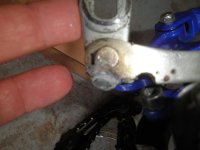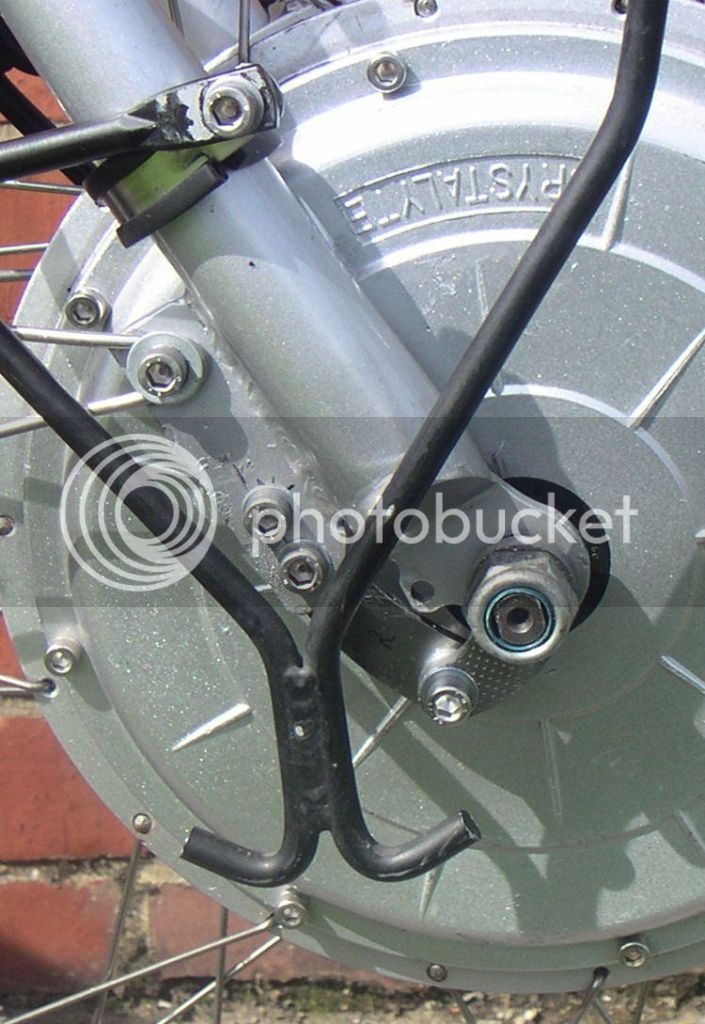alsmith said:
What are your thoughts on a diy solution such as silver soldering or brazing which should be possible with a gas torch for such relatively small parts? I know there are fans of certain epoxies here too so what are thoughts for this application?
Usually these types of torque arms you mention are, so far as I know, of closed mouth design. So if you put them over your axle and then soldered them to your frame, how would you extract the axles from the dropouts afterwards?
http://www.endless-sphere.com/forums/viewtopic.php?f=31&t=29129
These torque arms are open mouth design, if you can use them I recommend them. www.youtube.com/watch?v=xQOC2BwiJDU I think that you could probably do fine with soldering or brazing on torque arms with the right technique, I can't say I know that a solder job will hold forever, and who knows how well you will perform the task or what materials you will use, but I imagine if people are having great success with an epoxy (seems plenty have) that a solder job would work out fine for an electric bicycle.
I'd clean all surfaces super well before joining metals. Remove all paint, dirt and oil from the mating surfaces for sure. This means using stainless steel brushes and acetone, maybe some serious sanding action going on to get through the initial layers of paint.
Then I'd line the parts up, clamp them in place with metal clamps http://www.amazon.com/gp/product/B00004SBBN/ref=as_li_tl?ie=UTF8&camp=1789&creative=390957&creativeASIN=B00004SBBN&linkCode=as2&tag=xbnijgbr-20&linkId=F7UN3NZLP56JNAFS like these. Paint the area with flux and then heat it up and so on. I really recommend that before all of this that you should practice the methods and techniques before doing the important one.
Personally, I think steel is the way to go for retrofitting electric bicycles due to ideas relating to fatigue limit. Welding steel is probably a radically more ideal way to go compared to soldering or brazing. What I am getting at is, you can probably find an old stick or flux core welder for super cheap that'll do work out on steel. The welds might not be 'stack of dimes' pretty, but an angle grinder with a flap disc can make any weld very pretty. The main thing here is if you are concerned about the strength of this application, which it sounds like you are, you won't achieve the penetration level when soldering or brazing to anything close to what you'll get with welding. I am sure this doesn't mean anything unless you really understand the process, but welding means you are melting some of the material together of two seperate pieces both at the surface and usually a fair bit deeper. This isn't like a surface glue, this means the pieces are fused together at a certain point, this is what I mean by penetration.
If you decide to stay with your current setup for torque arms, I assume you have a nylon bolt preventing the bolt from unturning itself. If you were really worried, you could probably look into something like a combination of ideas, this is likely an insane degree of overkill though. But there are things like nord lock washers and loctite that you could use all together that would make it insanely difficult for the nut to undo itself. Lots of options for preventing nuts from undoing itself. www.youtube.com/watch?v=mgwmuZuJ02I



